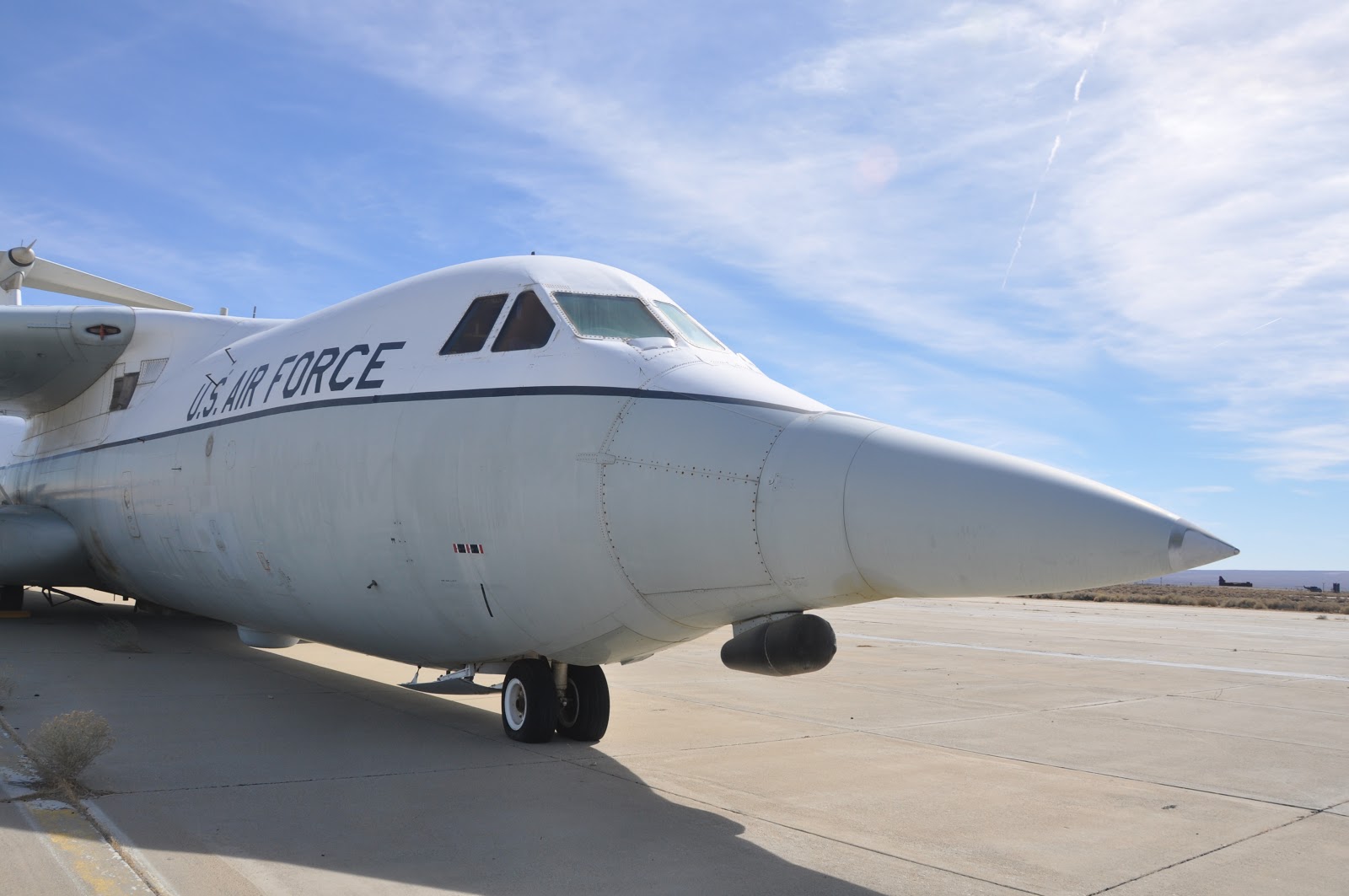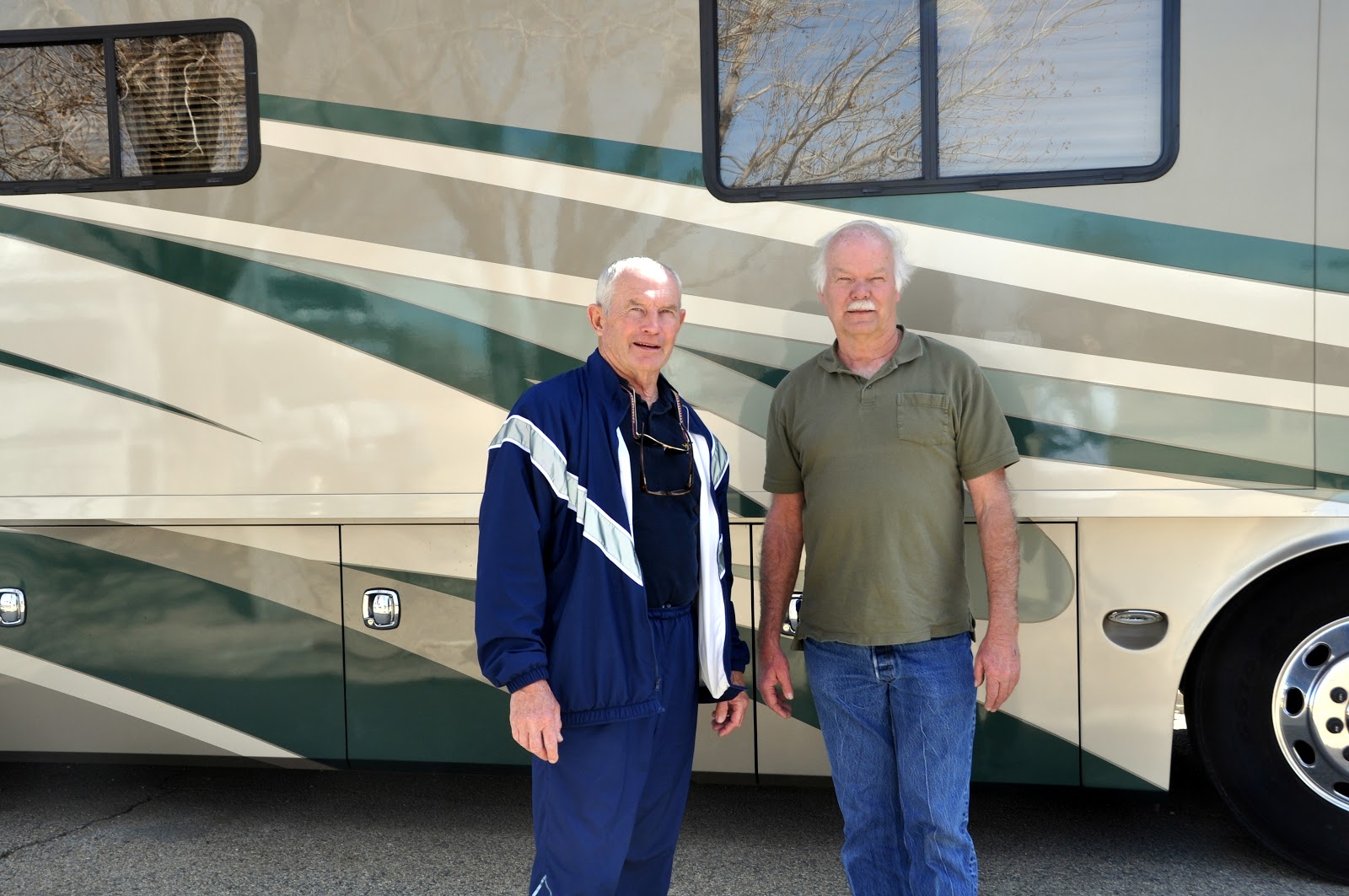Tuesday, Mar 5
We had a nice drive down from Sequoia National Park to the valley at a lower elevation and then back to 7,000 feet in Yosemite National Park. This is another park that Clara and I had visited 45 years ago. It was spectacular then, and its spectacular now.
We had planned to stay in the Wowona Campground at the South entry to the park (the closest one for us coming from Sequoia). However, when we got to the entrance and talked to the ranger, she discouraged us from staying there. Snow is predicted tonight and tomorrow at this elevation (7,000 feet), and she warned we may be snowed in for a couple of days. She suggested we drive the additional 25 miles to the main part of Yosemite Valley, where the elevation is only 4,000 feet and there probably wouldn't be as much snow, if any at all. We took her advice!
Thanks goodness she didn't warn us about the tunnel or else we would have turned around and left. Near the end of the 25 miles, there is a tunnel about 1,000 feet long. The height at the edges is only 10 feet - we're 12.5 feet high. We had to drive the entire length of the tunnel in the center. Thankfully, we didn't meet anyone! I don't know what we would have done if we had.
 |
| The Tunnel!! |
After coming out of the tunnel is one of the more photographed views of Yosemite Valley.
 |
| Lunch with a view of Half Dome Rock |
 |
| The view of Yosemite Valley from the Tunnel Overlook on Tuesday, and on Wednesday |
 |
| Bridal Veil Falls |
We had a beautiful, but very winding drive to where we are tonight, the North Pines Campground. We arrived around 3 pm and immediately unhooked the CRV and started taking in the sights. And they are again incredible sights.
The North Pines Campground has a couple hundred spaces for RVs, but there are around a half dozen here tonight. We are within a couple thousand feet of the base of Half Dome Rock. We have to move to the front windshield and look straight up to see the top of the rock.
Wednesday, Mar 6
It was bound to happen sooner or later. For only the second time in our travels in the motorhome, it is raining. The other time was in the Upper Peninsula of Michigan 3 years ago. It rained all night and looks like it may rain (or snow) all day. On the positive side, we got to see a lot of the beauty spots yesterday while it was clear, and it gives us a chance to catch up on some housekeeping chores and get up to date on e-mail, blog, etc. We didn't have any phone/internet service for 3 days when in Sequoia NP, but we do have service here.
And at least it's not snow at this elevation! If this had been snow, we'd have had over a foot I'm sure - and we'd be here for several days - which isn't all bad. Just hope it doesn't snow tonight.
We decided to go the the village (yes, there is a village in the park with lodges, hotels, restaurants, grocery store, etc. - really more like a town. Somewhat like Grand Canyon). We enjoyed having time to really take in the exhibits at the visitor center. There is also a museum, art gallery, and other gift shops. Then we decided to ride around for a while. Even though it has rained off and on, the views have been incredible.
We are very fortunate to have been here when the weather isn't perfect. It has given us a chance to see Yosemite from a different, and quite frankly more unique perspective. It is snowing at the higher elevations around the valley. The clouds are continuously changing, making every one of the landmark views change as the clouds drift around the valley. Although it is raining at our elevation (3,800 feet), it is snowing only a couple hundred feet above us. The granite walls surrounding the valley go up to 8,000 feet, so we are able to dramatically see the weather changes with altitude. The pictures that we took today are some of the most interesting and special that we have ever taken.
For Evan and Anna: Yosemite National Park was established by Abraham Lincoln in 1864 as the first land set aside by the Federal Government as a park.
More than 3.7 million visitors visit each year, mostly in the summer. There are very few people here now.
Yosemite is internationally recognized for its spectacular granite cliffs, waterfalls, clear streams Giant Sequoia groves and biological diversity.
The park has an elevation range from 2,127 to 13,114 feet. Where we are camped is about 3,800 feet.
The geology of the Yosemite area is characterized by granitic rocks and remnants of older rock. About 10 million years ago, the Sierra Nevada was uplifted and then tilted to form its relatively gentle western slopes and the more dramatic eastern slopes. The uplift increased the steepness of stream and river beds, resulting in formation of deep, narrow canyons. About 1 million years ago, snow and ice accumulated, forming glaciers at the higher alpine meadows that moved down the river valleys. Ice thickness in Yosemite Valley may have reached 4,000 feet during the early glacial episode. The downslope movement of the ice masses cut and sculpted the U-shaped valley that attracts so many visitors to its scenic vistas today.
 |
| The granite walls surrounding Yosemite Valley are hidden behind the mist of the clouds |
 |
| Our campsite is only a short distance from a massive granite wall |
On the way back to our campsite this afternoon, we spotted a coyote along the roadside. As we pulled over to stop and take a picture, he immediately trotted over to our car and stood just a few feet away. As we watched, another car pulled over near us and he trotted over to that car. This happened several times as we watched.
It was obvious that he had been fed from cars before by tourists (which is against park service rules) and had figured out that if he stood around long enough, someone may throw him some food.
We went to the ranger station and told them. They were familiar with the problem and were going to send a wildlife officer out to move him - again.
 |
| The coyote trots over to our car |
 |
| He waits for us to throw him some food (which we don't do) |
 |
| Another car pulls over and he trots off to them |
 |
| He waits patiently for a handout |
 |
| Then starts to look for the next car |
 |
| No one fed the coyote while we were there. Hopefully no one does. He could become dependent on receiving handouts from tourists, and may not be able to survive in the wild. |
Thursday, Mar 8
We got up early anticipating an early departure to go to Morgan Hill to visit Heidi, Ferrell and their kids. Heidi is Jill and Tony's daughter, old friends from our B-52 days at Blytheville AFB.
About the time we got up, it started snowing.
 |
| We weren't surprised that it snowed, but it did delay our departure from Yosemite |
I took the CRV down the road a ways to check on the status of our departure route. There is a status board on all the roads near the village center. Thankfully, our planned route was clear. All the other routes required snow chains. I also found that the roads were clear only a mile or so from the RV park, where the altitude was about 100 feet lower.
We hooked up the CRV and got ready to leave while we could before it could get much worse.
Our trip to Morgan Hill was pleasant, but some of the bridges coming out of Yosemite were rather intimidating.
 |
| The bridge was only slightly wider than the motorhome |
Heidi, Ferrell and their two kids came out to the campground where we are staying after we got settled in. What a great family. We had gone to their wedding in Utah year ago and were really looking forward to meeting the kids. After some getting reacquainted sitting around the RV (while the kids drove and played with all the switches), we went into Morgan Hill and had a great meal an Italian restaurant. We look forward to spending more time with them before moving on.





























































